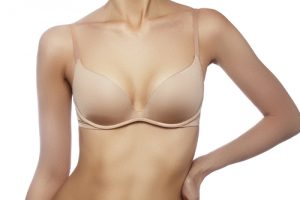The Most Effective Breast Lift Technique

Many of my patients decide on breast surgery after weight loss or pregnancy and childbirth to have their breasts “Lifted”. The breast is a three-dimensional body structure that serves multiple functions for women—aesthetic body image, breast feeding, and pleasure. Understanding the breast development, anatomy, function, and why they lose their shape, structure, and function is crucial to understanding, diagnosing, and reconstructing breasts as they age, “droop,” and lose their internal support.
Weight gain and loss and pregnancy/breastfeeding can cause significant damage to the internal breast structures as well as stretching out the skin (think stretch marks). These internal and external changes cause the breasts to deflate, droop, and develop that overall aged appearance. The frustrating thing for many women is that these changes are not reversed after childbirth. Often, women who desire a breast lift also inquire about returning lost volume to their breasts. While a breast lift with breast augmentation is a combination procedure that has been around for years, it is a more complicated procedure, and for some patients, it is recommended that these surgeries be performed separately.
However, I have developed a unique combination technique that I refer to as a “component separation” breast lift that better enhances both the quality of results and safety of the surgery. Component separation involves re-engineering the droopy deflated breast by separating the damaged structures into their separate functional components. Then, by making changes to each component and reassembling the components, I can create a more natural and aesthetically appealing breast that retains sensation and the ability to breastfeed. After the Component Separation Breast Lift, if additional volume is needed to create a better shape and more cleavage, I will either insert a breast implant or perform fat grafting to the upper and inner breast to replace the lost volume. This completes the breast sculpting that restores the breast to a shape that is equal to or better than the patient’s youthful breast.
The Consultation
A large part of performing a component separation breast lift is preparation. The consultation is a vital part of attaining desirable results. During your consultation, I will thoroughly assess the elasticity and quality of both your skin and breast tissue, the amount of excess breast skin present; the amount of damage to the breast tissue from weight fluctuations, breastfeeding, genetics, age, diet, and smoking; and the degree of nipple ptosis (sagging). All areas will be carefully examined to ensure that no section of the breast is overlooked during the procedure. From here, you and I will together develop a plan that will combine your aesthetic goals with what I believe you can reasonably expect from your results.
The Procedure
For many years, doctors believed that a breast lift and augmentation needed to be performed separately to achieve desirable results with a limited chance of complications. I don’t agree. The component separation breast lift divides the breast into sections so that each one is adequately cared for and addressed. With this procedure, we restore or redistribute these sections, adjusting each component separately before we put all of them together. Traditionally, we first separate the skin layer from the breast tissue so that we can remove excess skin and breast tissue. Then we add the volume. Volume can be added by implants (to create upper pole fullness) or by fat grafting (to create cleavage). By looking at the breast first in sections and then as a whole, we can reach the desired shape with minimal complication.
Why Choose Fat Grafting Over Implants?
Although breast implants have been used for decades with wonderful results, I am seeing an increase in the number of patients requesting fat grafting over silicone or saline implants. Fat grafting has been gaining popularity in place of implants in recent years, and using natural fat to augment the breasts comes with many benefits. Because I use your own fat to augment and add volume to the breasts, there is no chance of rejection as there is no foreign material being added to your body. In turn, this decreases the chance of infection.
Implants, while safe, do come with risks, both in the short- and long-terms. While breast implants are generally safe, they carry several small risks, including rupture, capsular contracture, bottoming out, hematoma, and changes in nipple sensation. And while breast implants are long lasting, they are not designed to be permanent, which means that you will need to swap your old implants for new implants roughly every decade. Fat grafting, however, doesn’t come with any of those risks or requirements and is typically less expensive than saline or silicone implants. If you need additional volume, we can discuss which option is best for your specific case.
If you are interested in both a breast lift and breast augmentation and would like to learn more about the component separation technique, contact Dr. Reichner’s office today by calling (714) 997-5200 to set up a consultation.
